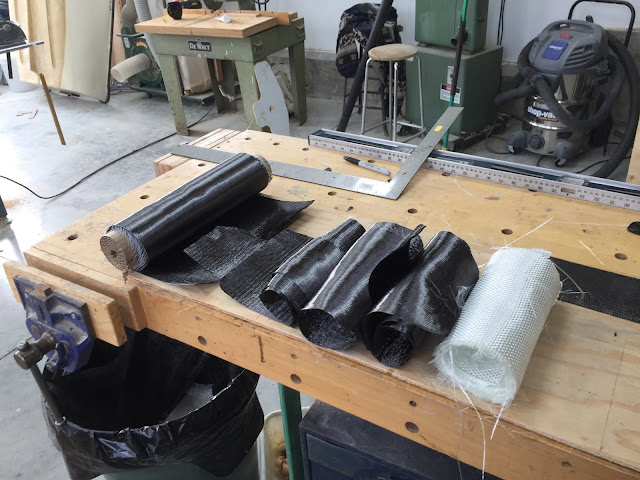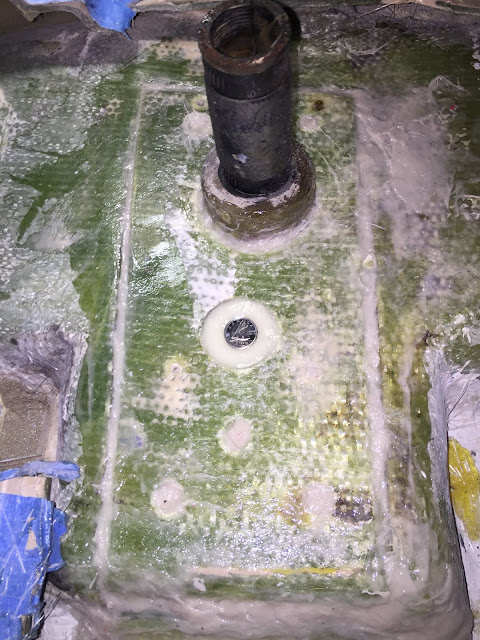So, you can imagine what happens.
A 1" bolt torqued to 300 ft/lbs exerts a tremendous amount of clamping force. On the first bolt, the mast step spreads this load somewhat but on the second keel bolt, standard fender washes are used to distribute this load. See below.
http://www.engineersedge.com/calculators/torque_calc.htm
When torqued, the keel bolts exert 18000lbs compression on the fibreglass top of the keel stub and if that deflects, on the putty beneath. The mast and rig exerts its own additional load, as do hard groundings. If the putty has shrunk, is crushed, damaged or deteriorated, it compresses to some extent. You run aground, things get jarred, maybe fracture a bit. Torque is lost, things move, the mast step sinks a little, the smile opens, more water enters, etc.... You re-torque, things compress.... Etc.
When it hits this stage, the typical repair is major:
- Cutting out any interior parts which hinder access
- opening the keel stub,
- removing all of the putty (hardened polyester resin, aka "bog". basically cheap marine bondo),
- ideally adding some structure to take the compression lead of the bolts,
- refilling the cavity with... something,
- repairing the glass that was cut for access.
- reestablishing some sort of structural integrity as this is a major stress-bearing region of the boat.
- Replacing the interior.
A pro repair of this type would certainly exceed $10,000. (Bristol Marine has developed a slick repair that involves drilling a hole coaxial with the keel bolts, and replacing the putty removed with a fiberglass compression post. this minimizes much of the work described above. I have no idea what they charge for this.)
On the other hand....a boat that had not yet exhibited any signs of failure or significant deterioration could be perfectly fine. Keep the water out, improve the load bearing surfaces to better distribute the compression, and it would likely be fine for another 30 years.
Windstar had no significant signs of structural degradation, although the fiberglass supporting the second keelbolt had sunk a bit. After a lot of thought and discussion with others, I elected to simply do a thorough job of reinforcing the mast step area, and anywhere else subjected to the keel bolt torque. I feel that the factory could have done better than simply using washers, and I think most builders skimp in this.
So, I was all set to move ahead with this strategy, and bounced it off Doug A who at first agreed, then in a later email he echoed my own lingering doubts:
Again, I can't thank Doug enough for the time he took to share the details of his own excellent repair, and as a sounding board for my own.
I thought also about eventually having to sell the boat and I did not want to be in a position of having to be less than transparent about what may have been a latent issue. Life's too short for that.












































